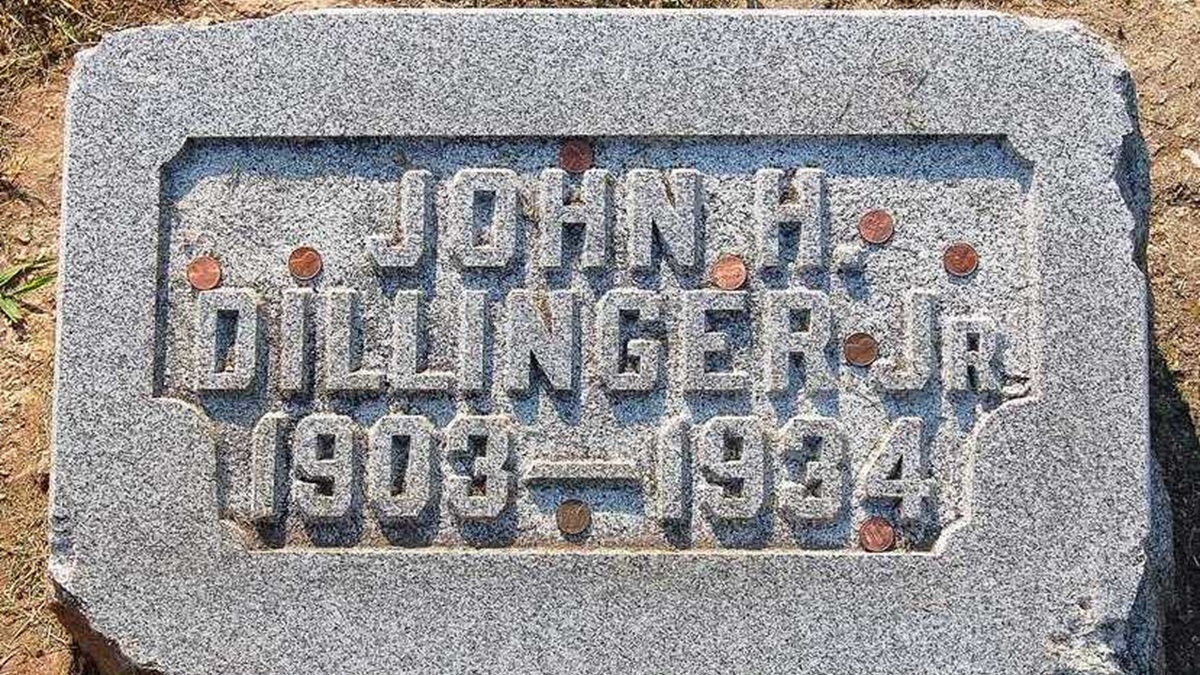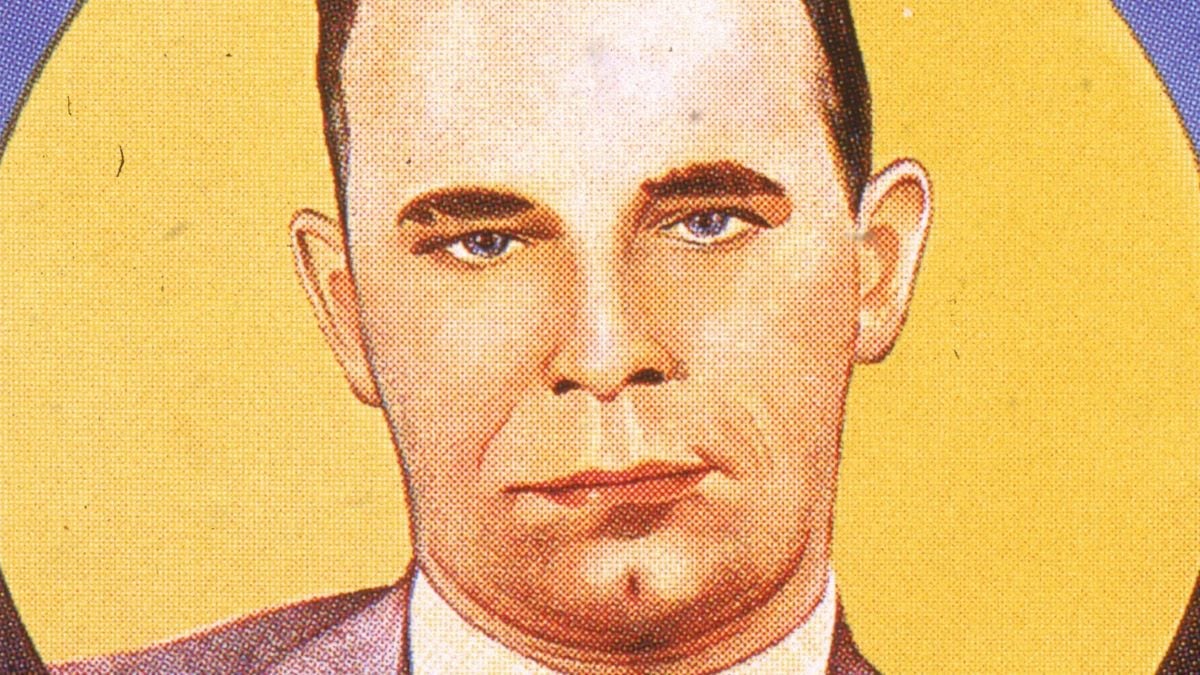John Dillinger was one of the most infamous gangsters of the Great Depression. He led a group called the Dillinger Gang, who committed a string of dramatic bank robberies. Dillinger and his crimes were the subject of sensational headlines during his time, but the authorities eventually caught up to him ni 1934. Very (very) soon after they did, he died at 31 years old.
A prison escape
In January 1934, Dillinger was arrested in Tucson, Arizona, and extradited to Indiana’s Crown Point jail where he was facing the electric chair for the murder of a police officer who was killed during a bank robbery. His cell was located on the second floor, and he spent the majority of his time there. The only times he was allowed to leave his cell were for meals, exercise, and grunt work.
Dillinger obeyed orders and did what he was told to do. One of his hobbies in jail was whittling, which he was good at, and the jail guards even called him “John the Whittler.” Unbeknownst to them, Dillinger had a plan. The jail was supposed to be escape-proof, but the notorious bank robber proved them wrong. All the whittling wasn’t for nothing: Dillinger carved a washboard into the shape of a pistol and dyed it with black shoe polish.
On March 3, a jail employee was passing by the recreation area when Dillinger grabbed him and pushed the head of the wooden gun on his body. He threatened to kill him if he made any sudden moves. Using the man as a shield, Dillinger ordered the other guards to go into the jail cells and lock themselves in. He went into the warden’s room and grabbed a couple of firearms before heading out of the jail and completed his escape by stealing a sheriff’s vehicle.
That act prompted the Bureau of Investigation or BOI (later changed to the Federal Bureau of Investigation or FBI in 1935), headed by J. Edgar Hoover, to actively get involved in the hunt for Dillinger. As he was crossing state lines driving to Chicago in a stolen car, he was committing a federal offense.
Public Enemy No. 1
It was a challenge for Dillinger to move undetected as by this time, he was widely known as a wanted criminal. He knew that getting captured would lead to his death. As he said to a friend, “If I surrender, I know it means the electric chair. If I go on, it’s just a question of how much time I have left.” In an attempt to hide his identity, Dillinger, underwent plastic surgery in April. He wanted moles removed, dimples filled in, and the angle of his mouth changed. During the surgery, the doctor used an excessive amount of anesthetic, which almost killed Dillinger. Several days after, Dillinger returned to have his fingerprints removed with acid.
In June, the hunt for Dillinger was heating up. The BOI declared him “Public Enemy No. 1” and $5,000 was offered as a reward for anyone who could provide information of his whereabouts, and $10,000 (about $233,000 today) for his capture. Tips started pouring in, and the BOI worked diligently to track which ones were credible. One tip was from a woman named Anna Sage, who claimed her friend visited the brothel she owned with Dillinger.
Sage was originally from Romania and was in the United States as an illegal alien. She was at risk for deportation and wanted her case to be tossed in exchange for information about Dillinger. The BOI set up a meeting with Sage and said that they could give her the $5,000 reward if her tip resulted in an arrest, but they couldn’t guarantee that she wouldn’t be deported. They could, however, put in a good word about her assistance with the case. Sage agreed to the terms and revealed she, a friend, and Dillinger had plans to go to the movies the next evening. The location was yet to be determined, but it would either be at the Marbro or Biograph Theater.
Dillinger’s death
On July 22, 1934, BOI agents were stationed at both the Marbro and Biograph theaters. Sage alerted them that they would be going to the Biograph. Agent Melvin Purvis was near the entrance of the theater, and when the movie – crime drama Manhattan Melodrama – finished, he saw Dillinger exit.
Purvis then lit a cigar, the signal to confirm to the other agents that he had eyes on Dillinger. Purvis swiftly raised his gun and aimed it at the fugitive yelling, “Stick ‘em up, Johnnie. We have you surrounded!” Dillinger reacted by running away in the direction of an alley while trying to get his gun out of his pocket. Gunfire echoed through the city, but Dillinger never got off a shot.
He was riddled with bullets, with the fatal shot blasting through his neck. Dillinger was brought to a hospital but died en route. He was pronounced dead at 10:50pm.
Was the real John Dillinger killed?

After his death, there was a conspiracy theory that it wasn’t Dillinger who was gunned down outside the theater. During the autopsy, the medical examiner was able to determine Dillinger’s identity via fingerprints. It turned out that burning his fingertips with acid didn’t work, as there were still prints that matched his records. In 1934, surgeons conducted a study ordered by Hoover to determine whether it was possible to alter or get rid of fingerprints by scarring the fingertips or burning them with acid. The study concluded that it wasn’t that simple. Skin must be grafted over the fingertips in order to permanently conceal the prints.
Still, the conspiracy theory didn’t die down throughout the years. In 2019, some of Dillinger’s descendants filed a motion to have Dillinger’s body exhumed for DNA testing. Michael Thompson, Dillinger’s nephew, said that he wanted to know if there was truth to the rumors. He had a permit approved by the state of Indiana but the location of the body, Crown Hill Cemetery, was against it. A representative said that it would be a safety hazard and a “public spectacle.” Thompson, in turn, sued the cemetery.
Crown Hill Cemetery filed a motion to dismiss the case, and it was granted. The judge stated that according to Indiana law, the cemetery must agree to the exhumation. The case was dismissed without prejudice, which means that Dillinger’s descendants may file a lawsuit in the future.
Dillinger’s body is in section 44 of the Crown Hill Cemetery. It is buried under concrete to prevent grave robbery. Many people visit the notorious gangster’s gravesite each year, and some chip off corners of his gravestone to take home as souvenirs.

